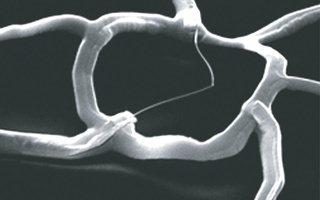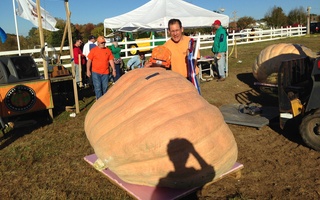A chemistry professor’s home agriculture project took the cake—or more accurately, the pie—at a Rhode Island competition this weekend.
Chemistry professor Charles M. Lieber grew a 1,870-pound pumpkin, which was named the biggest pumpkin in Massachusetts and the 17th largest pumpkin in the world this year, he said.
“It’s not the best for eating, but it’s not that you couldn’t eat it,” Lieber said. “If you wanted to make pumpkin pie, you’d have to add a lot more sugar.”
This year’s pumpkin growing process started in April and involved several steps, including germinating the seeds, monitoring a temperature-controlled greenhouse, and pollinating the plant by hand.
{shortcode-7fa1ef49a8482be1672114654483a2fe5b4f82cb}
This careful process, however, is not new to Lieber, who started growing pumpkins about seven years ago when his father gave him a book about growing “giant” pumpkins, he said.
“I just decided to give it a try for relaxation, stress relief from work,” Lieber said.
Lieber’s first pumpkins were not as large as the 1,780-pound beauty. “Like in many things—in athletics or probably academics—there’s some genetic components to success and that’s true in agriculture and pumpkins,” Lieber said.
He had to play with different seeds and study soil biology to discover the best conditions for growth. “I would say the seed genetics, the soil biology,...the balance of nutrients in the soil as well as … luck in terms of what the weather is like…contribute in making everything happen,” he said.
{shortcode-50c3f14f0e5c069d05ffad8b1094f5b0b9315511}
Although his first pumpkins were smaller than this year’s prizewinner, Lieber had previously entered the weigh-off competition. In 2010, he won the contest with a 1,610-pound pumpkin, and in 2012, he grew a 1,770-pound pumpkin, which set a Massachusetts record but was 2nd place at the weigh-off.
“I learned a lot for the first few years and was able to continually improve,” Lieber said.
This year, Lieber used a combination of organic fertilizers, organic symbiotic bacteria, and a few chemical-based fungicides to keep the plant healthy. “It takes quite a bit of work and babying, checking things,” he said.
After pollination, the plant grew rapidly. “It put on—in 20 days—800 pounds,” Lieber said. To promote this growth, he had to protect the plant against insects, vine bores and other fungal diseases.
According to Lieber’s wife, Jennifer, the pumpkin attracts people’s attention as a lawn decoration. “People often stop by, and they wonder if these are real,” she said. “I heard one little girl early in the morning say, ‘It’s real, mommy, its real!’ I guess she touched it. Other people wonder where we have bought them.”
With this year’s winning entry now cut from the vine, Lieber and his family plan to leave the squash in his Lexington, Mass., yard through Thanksgiving. Lieber also has jack-o’-lantern ideas in the works.
“You can use a chainsaw, but I use a hand tree saw because, you know, the walls can be eight to 12 inches thick.”
Read more in Faculty News
Robinson Library Restricts Entrance to Grad StudentsRecommended Articles
-
Pumpkins: Bigger Isn't Always BetterThe most popular pumpkin in the Square is not Linus's gigantic model of "Peanuts" fame, but the small orange gourds
-
Team Develops Nanowire RingsHarvard researchers have developed a breakthrough nanowire technology integrated into high-tech electronic circuits—which, among other things, could help manufacturers significantly
-
 ‘Cyborg Tissue’ Created
‘Cyborg Tissue’ Created -
 Harvard Today: October 15, 2014
Harvard Today: October 15, 2014 -
 Chemist Charles M. Lieber Named University Professor
Chemist Charles M. Lieber Named University Professor













